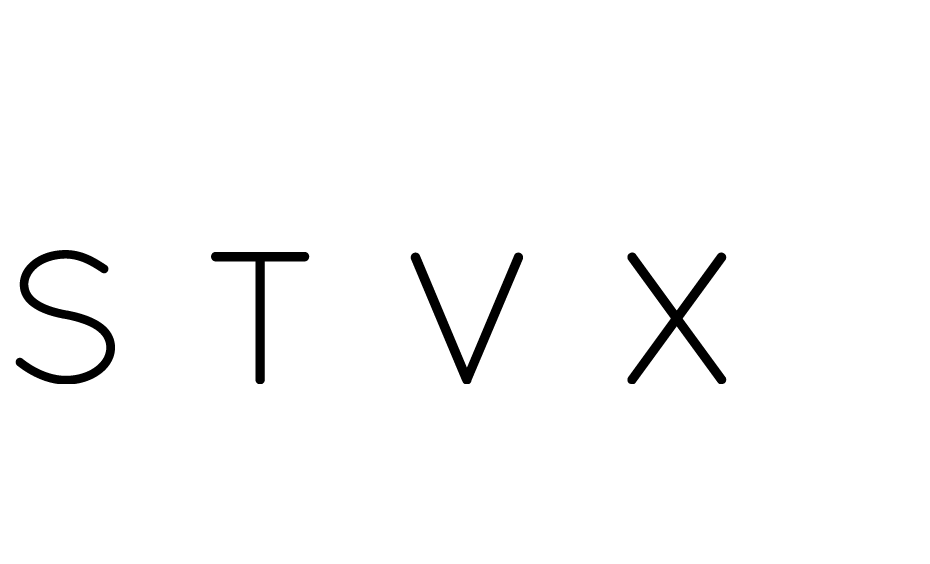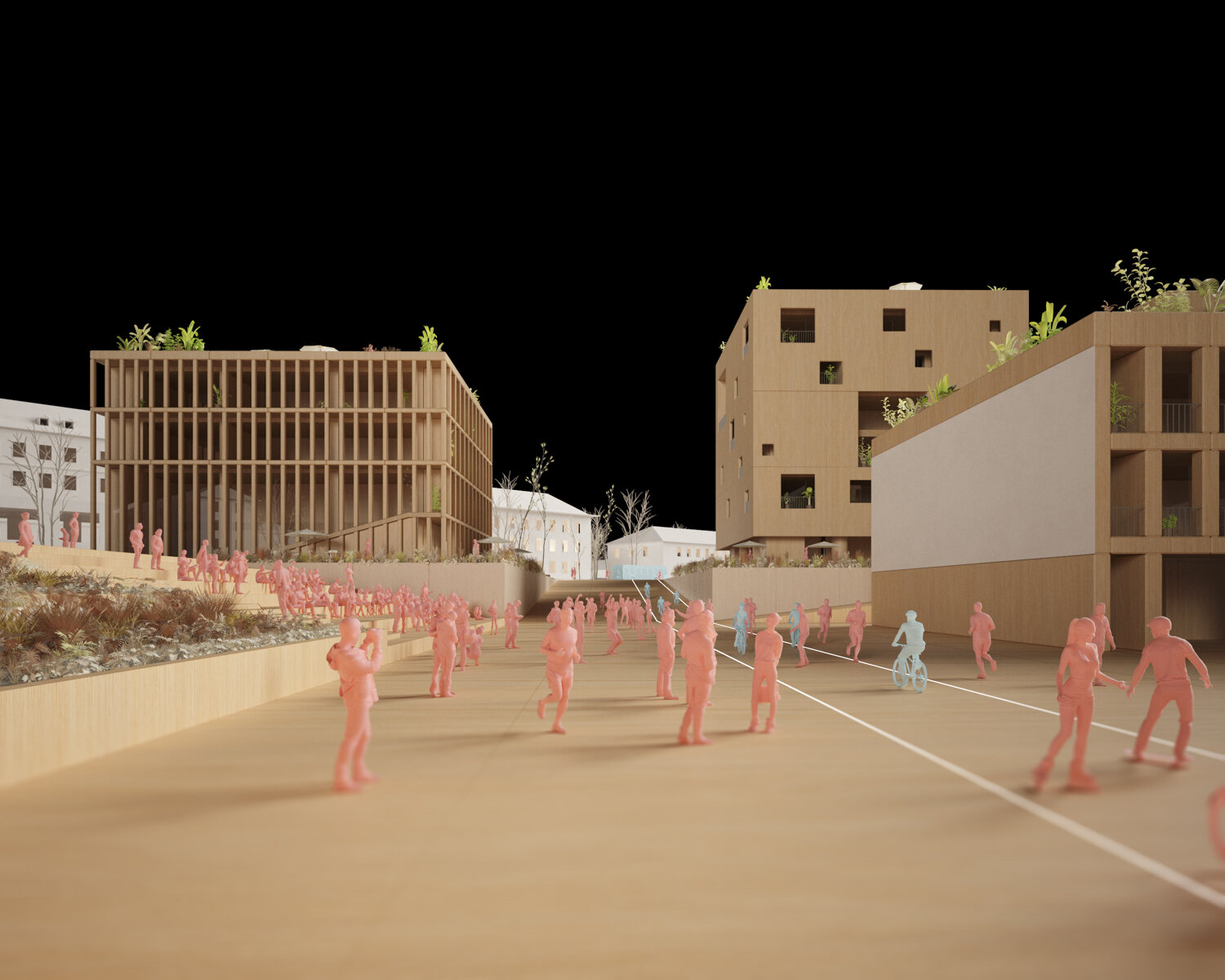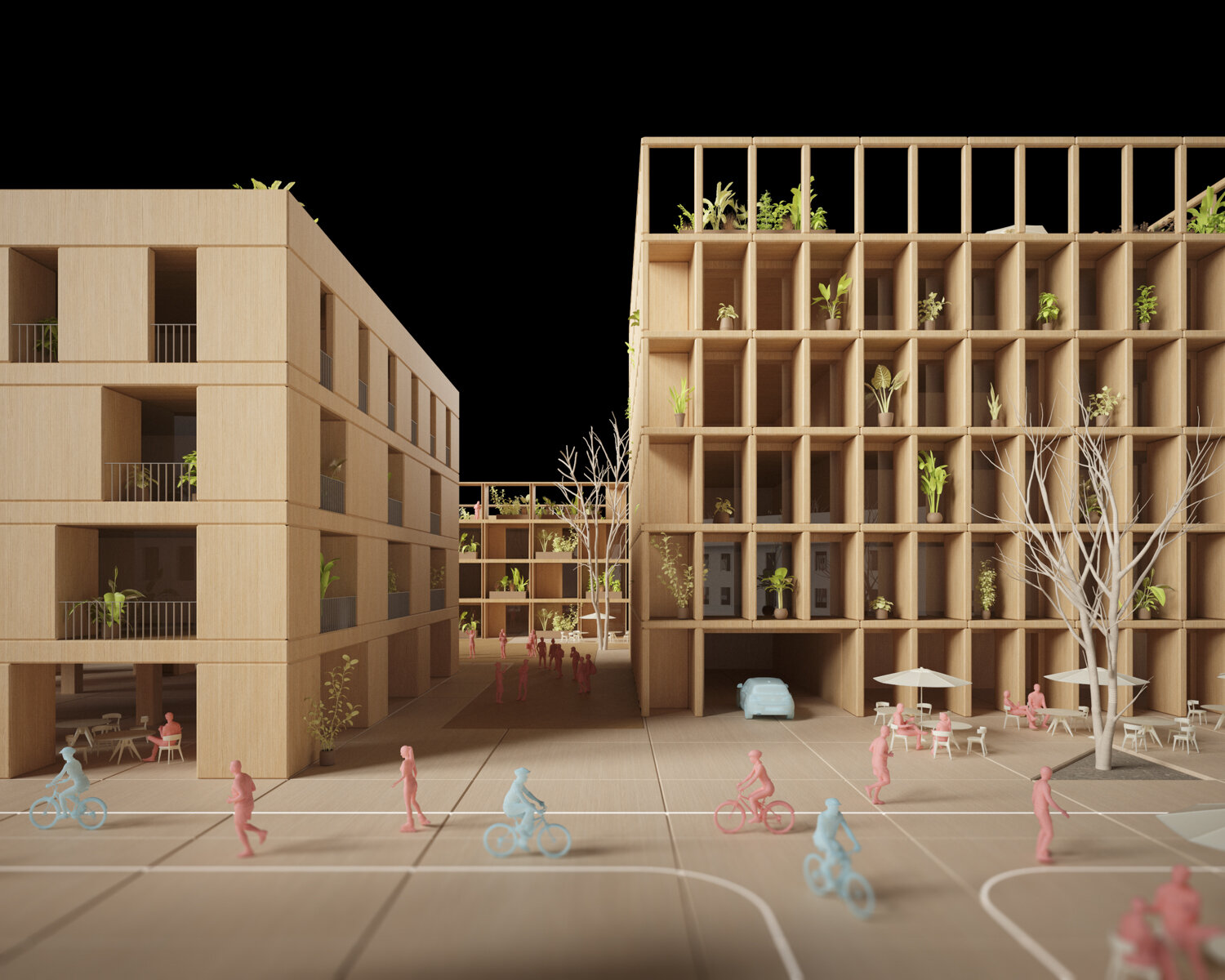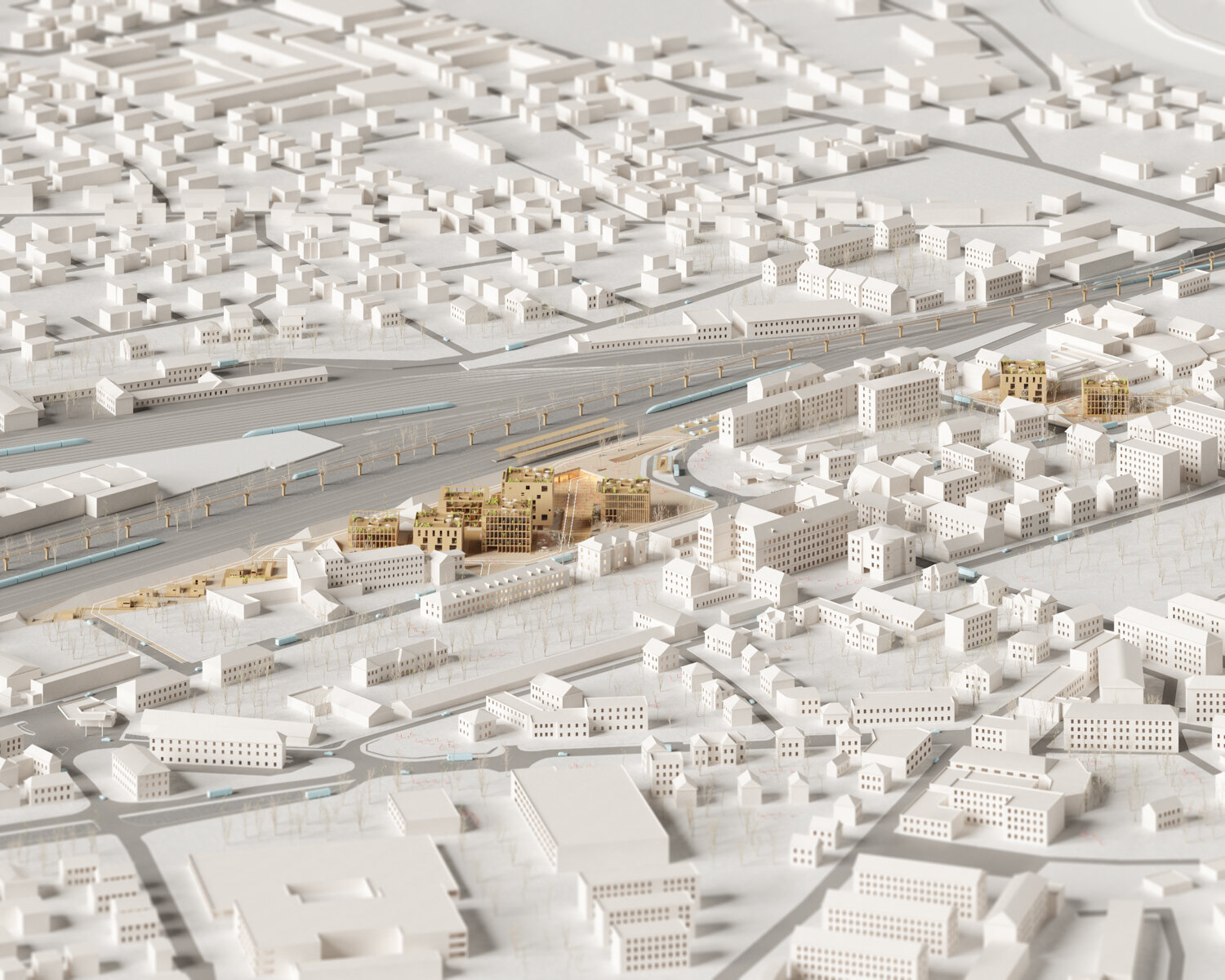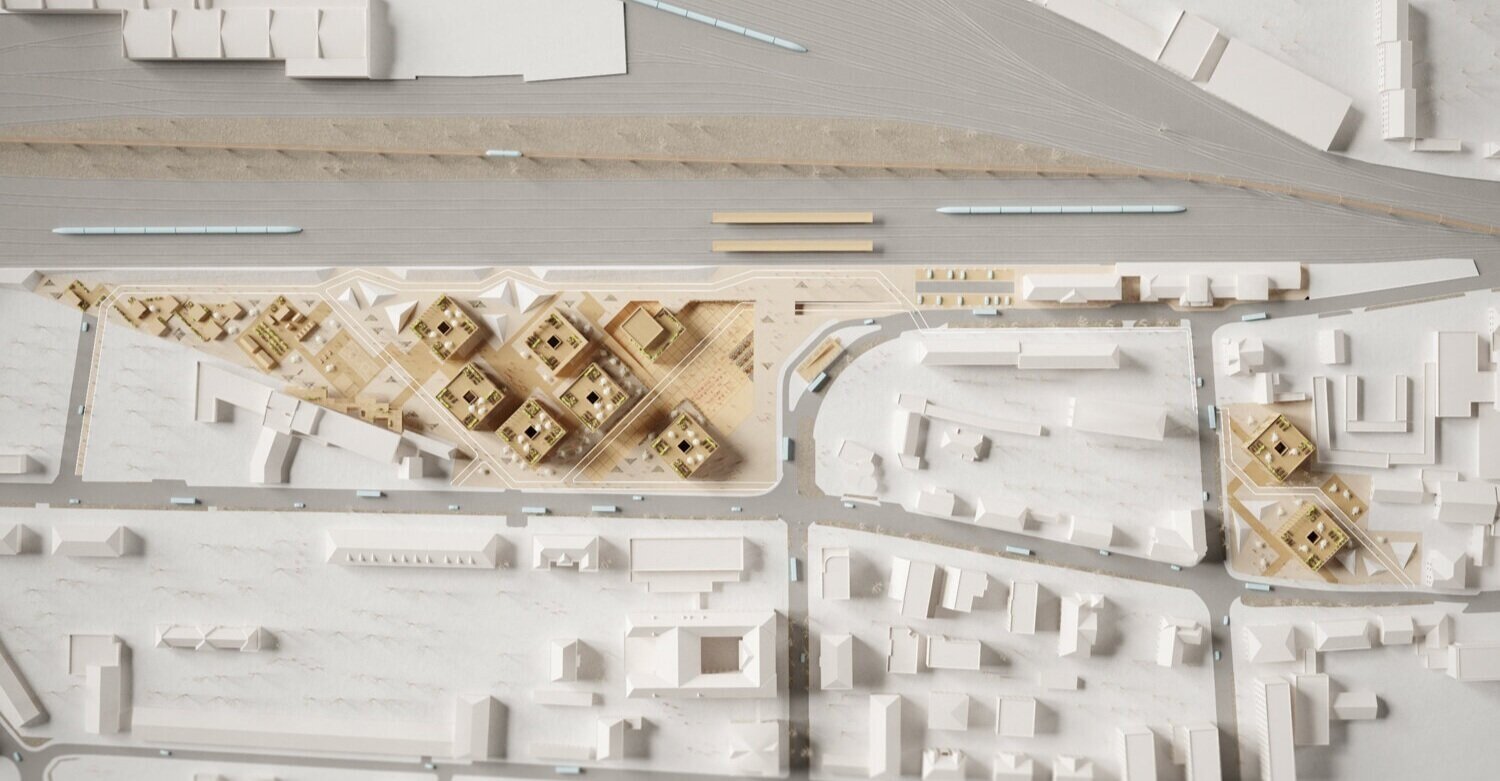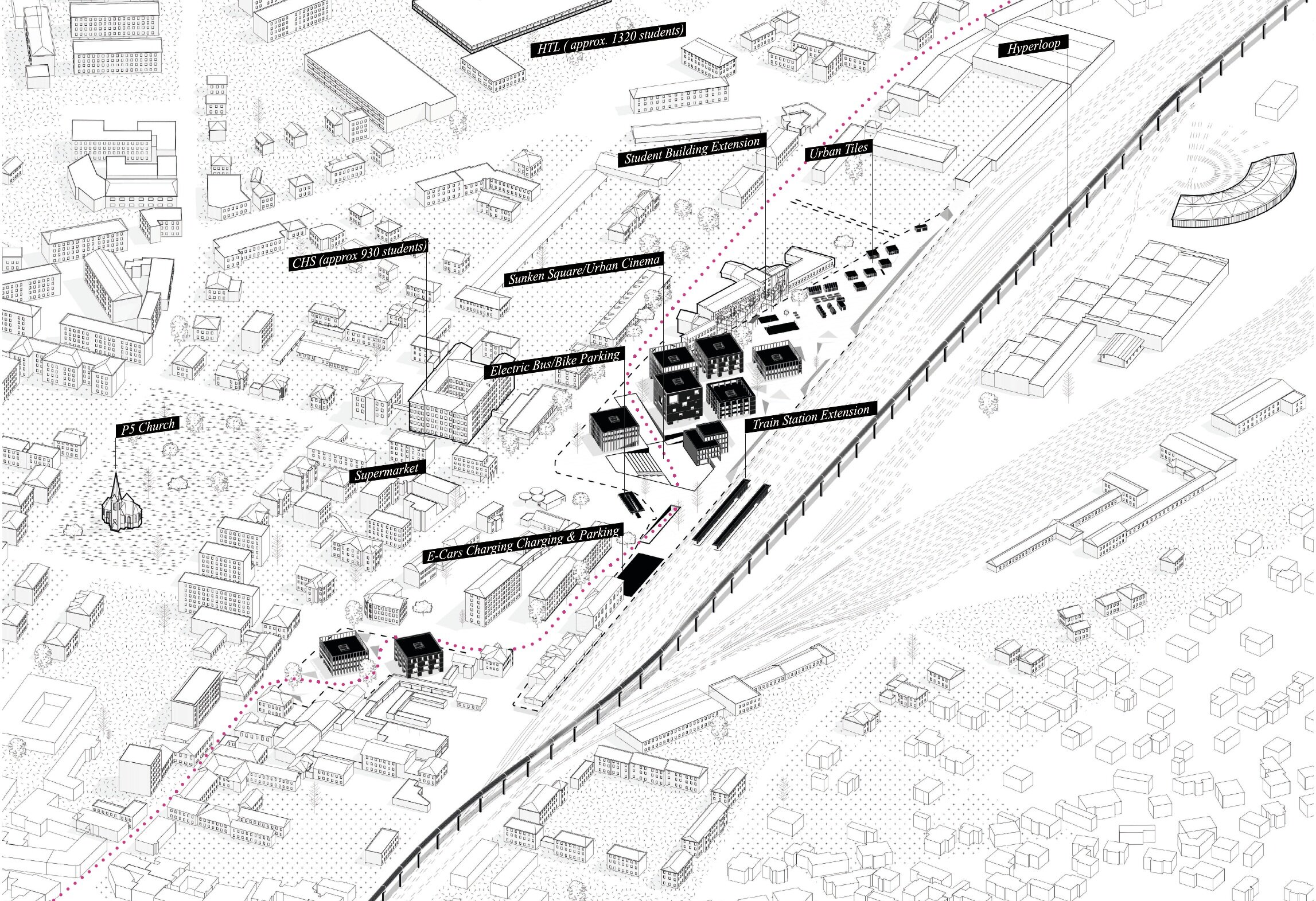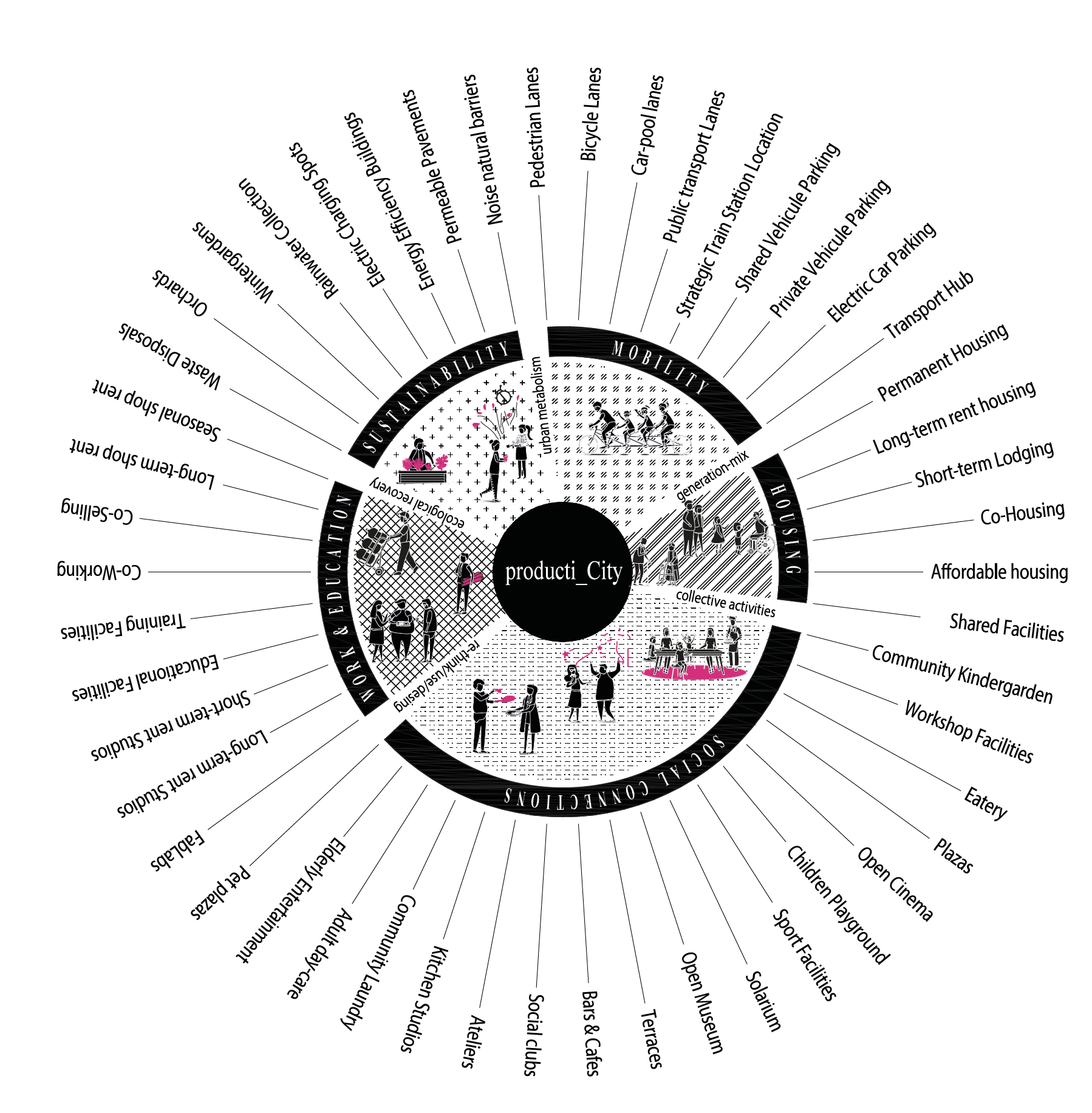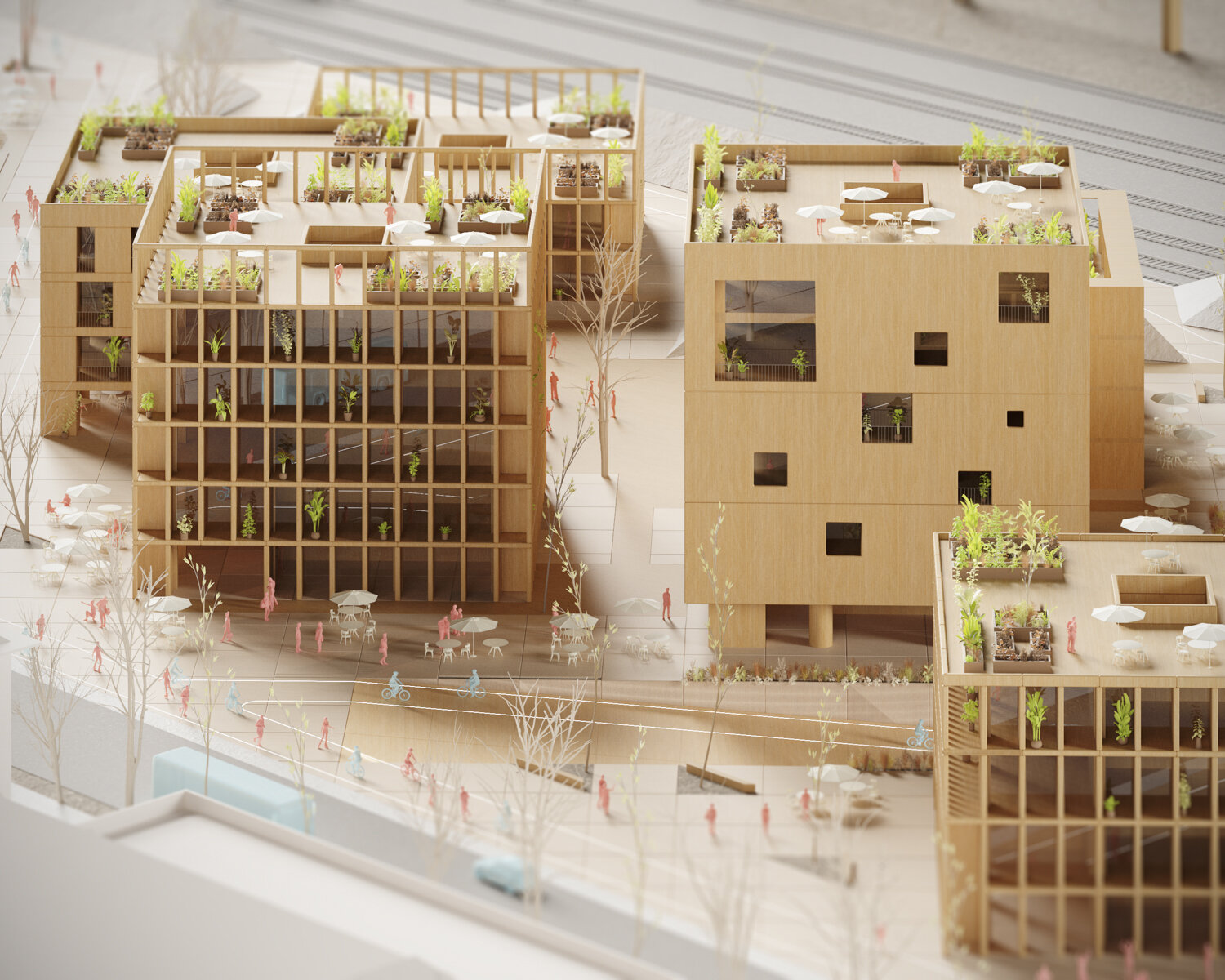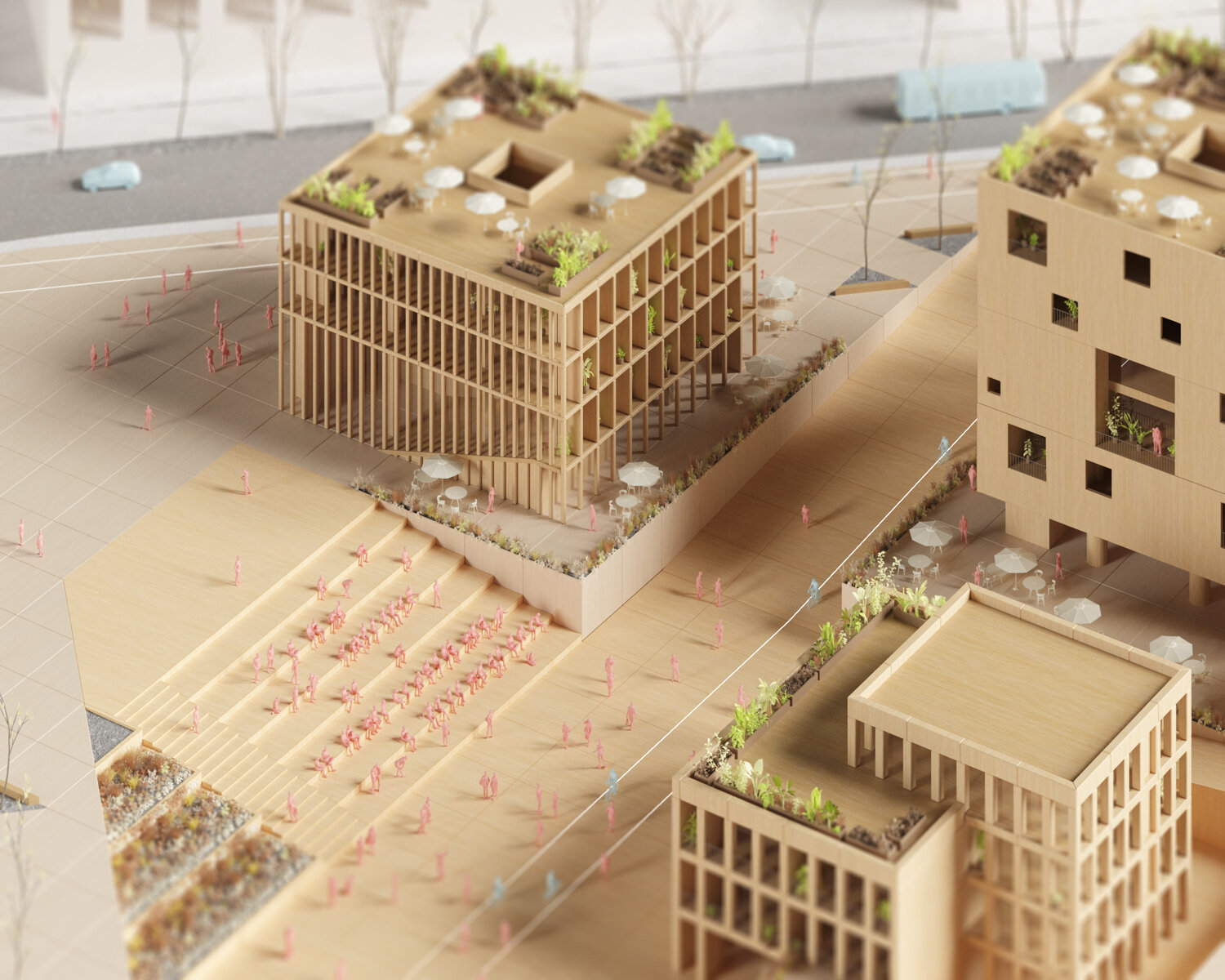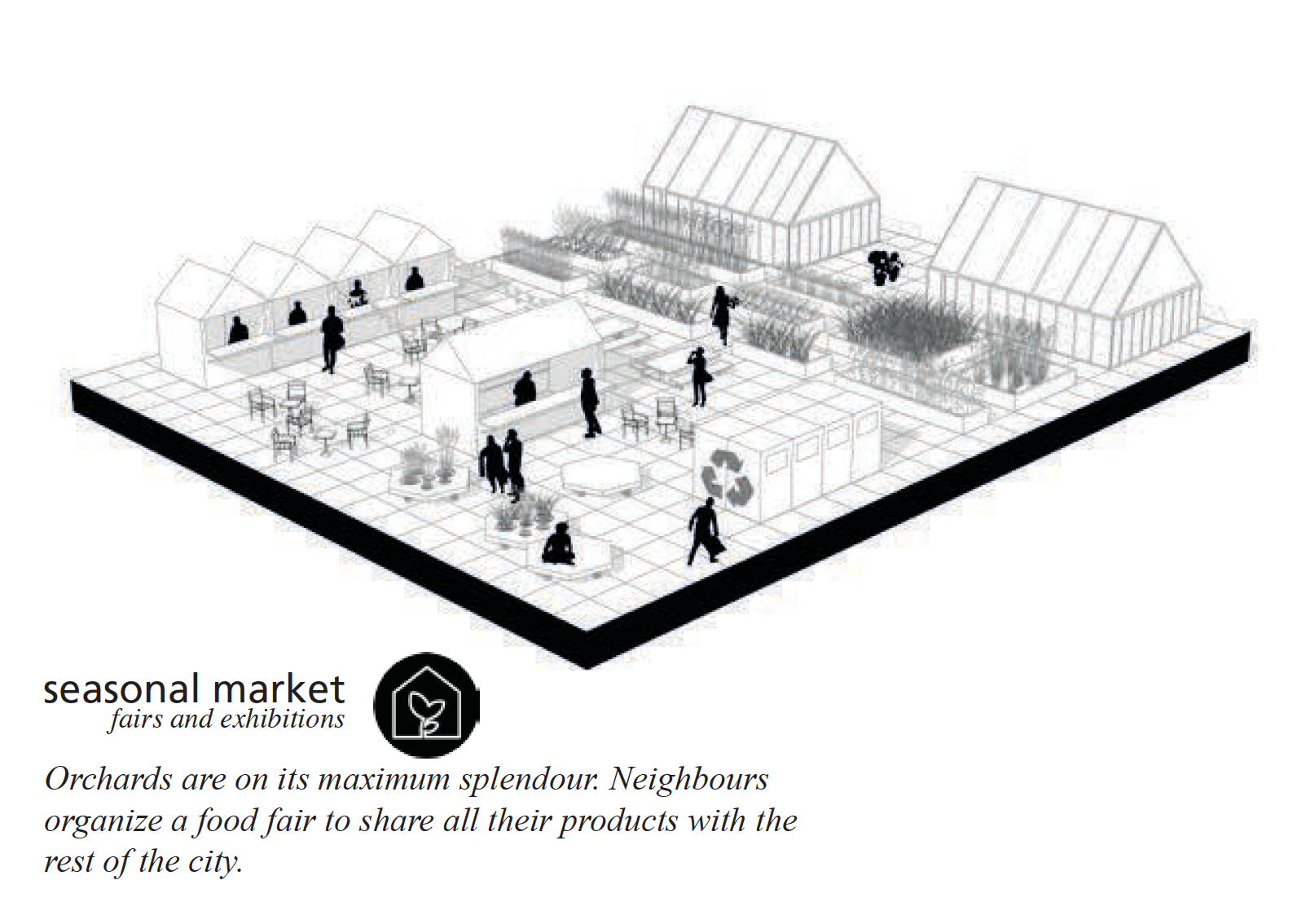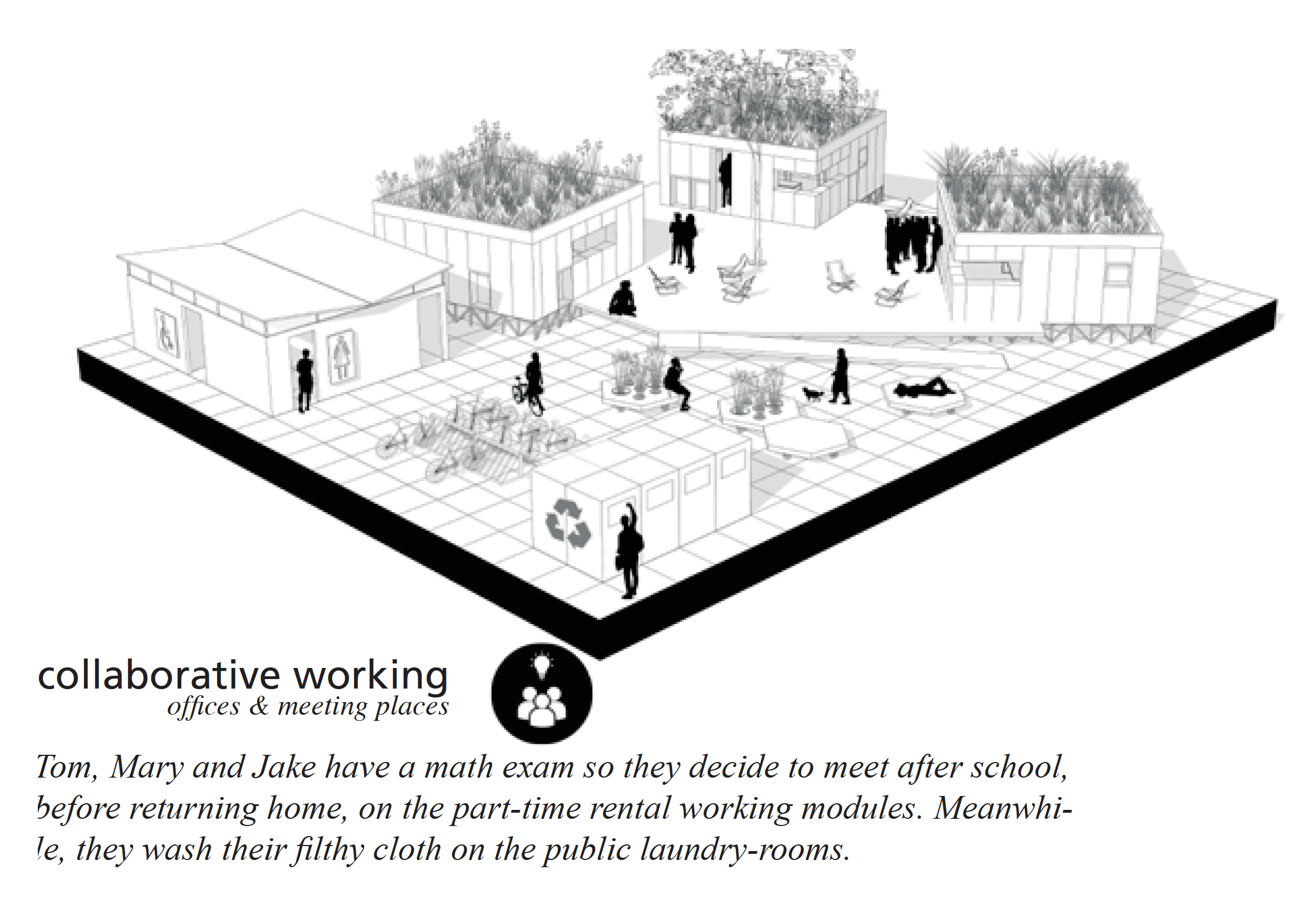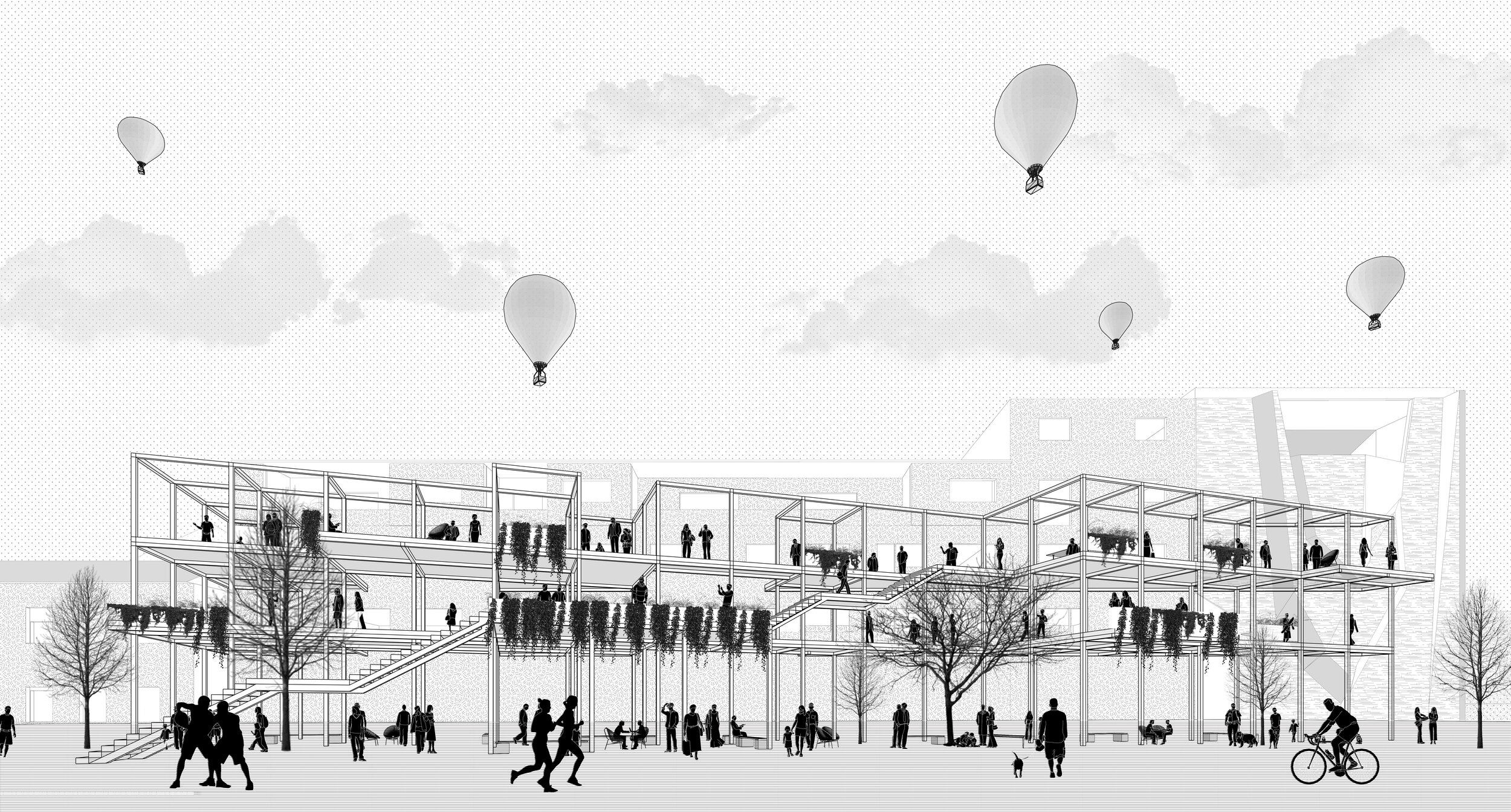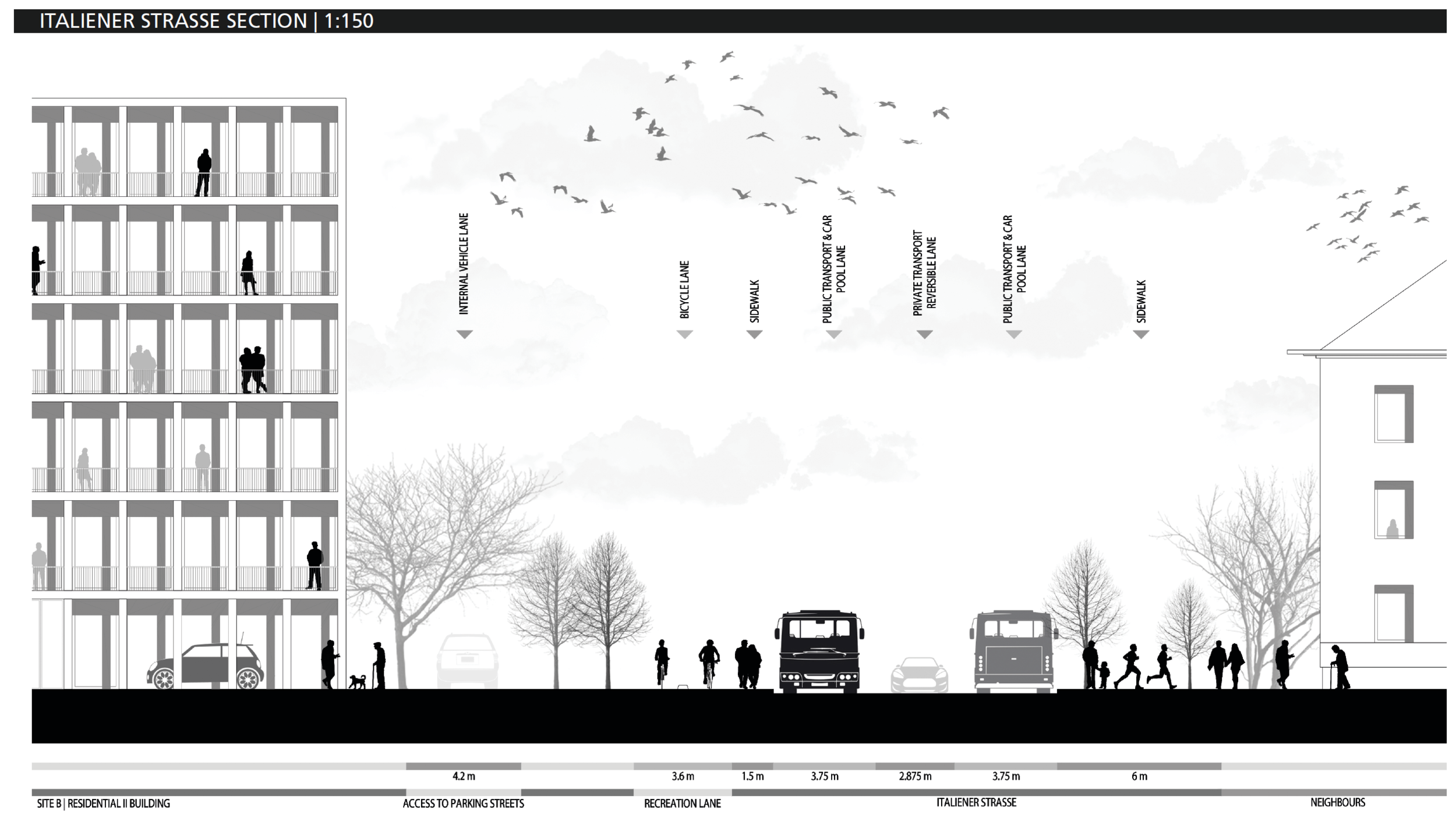EUROPAN - PRODUCTICITY
International Competition
2020
STVX + Daniel Alcala Architects + María Eizayaga
TOWARDS A PRODUCTIVE CITY
Walk(ing), meet(ing), talk(ing), improvise(ing), share(ing), invent(ing), connect(ing).
All this is productivity too. Productivity is a holistic matter, and the city of the future must persuade us to achieve it by learning how to channel efforts in more intelligent ways. After so many decades in frank acceleration, believing that being fast is being productive -but failing in the attempt- isn´t it time to resume slow life?
If 20th century brought us speed, stress and chaos, the 21st should be the time when we humans evolve the way we live in more efficient manners. Technology is advancing in such a fast pace that it has the potential to change human life forever, therefore as we wisely use it we will be able to create and live in more accessible environments. Hein, our project stems from the idea of returning the city to pedestrians thus converting the E15 Strategic Site in a Walkable Quarter.
SOFT URBAN QUARTER
The intervention aims to implant the new district carefully by creating a yuxtaposed grid of parallel axes to the train rails and a new set of axes rotated by 45 degrees which create pixel modules of 4.8m x 4.8m. The rotation of the New Urban Grid allows Italienerstrasse to enter site B and transform into a linking sunken square. Site A becomes mainly residential, conferring an urban scale to the corner of Pestalozzistrasse with Italienerstrasse. Site B really evolves from its previous wasteland status to a whole new and visionary urban quarter. It contains an experimental mixed use program: various formats of housing, co-working and collaborative selling spaces, urban orchards, a lively sunken square with urban cinema, amphitheater and connection to the station extension.
We propose the development of Site A (northern part of E15 Site) and the southern part of Site B along with soft mobility lanes and electric bus station and E-Cars Charging point as a short term implementation phase. Mid-term phase includes the Sunken Plaza, Urban Cinema and 7 mixed use and residential buildings on Site B. All this with de development of the Train Station Extension. The long-term phase contemplates the realization of Hyperloop lines, which will connect in a faster, and more sustainable way several cities along Austria with important cities all across Europe.
THE POWER OF IMPROVISATION
The city of the future must help us unlearn the addiction to order, it must allow us to improvise. Absolute categorizations of space must remain in the past. Unplanned activities, free surfaces, and neighborhood exchange can be effective strategies for this. Today we can reinvent cities with a human, organic and let us say, soft touch.
Claiming leisure, reinvigorating conversation and collective activities. The city must recover the search for meaning, beyond facilitating productive life and living together. A vibrant city should move us, motivate us to walk on it and travel through it in many different ways.
The concept of slow life aims to create community, through architecture and urbanism of mixed use, collective life and open city. We propose to pursue all of these from 5 main axes:
Housing, Social Connection, Mobility, Work & Education, and Sustanability
URBAN TILES POSSIBILITIES
Multitasking is a very common word today. However, only objects, spaces and cities can be genuinely multitasking if people are as well. We believe that our intervention should generate in people the desire to move from linear to multidirectional action schemes.
We propose public space as an experimental canvas, capable of mutating according to domestic microevents or collective macro-situations. The program is mixed and activities are diversified.
Our urban approach is based on a mat composed of two layers: a grid network with modules of 4.8 Meters per side, rotated at 45 degrees with respect to the train rails axes generating a rational module that works like a pixel. A pixel that is deconstructed in random subtractions with infinite possibilities to improvise the landscape and the collective activities of the urban space. The public space generated on the southern part of site B is conceived as thematic tiles organized to promote social connections between inhabitants and visitors to the area.
TRANSPORT HUB AND SOFT MOBILITY
The new Transport Hub has the potential to become a connection node between the Southern region of Austria and other countries in Europe. Our proposal contemplates a vast range of speed solutions, from the Hyperloop, to the new Train Platforms, to an Electric Bus System and E-Cars Station to a generous soft mobility system of lanes for biking, jogging and skating.
The private car, a symbol of progress until reaching personal status in the last century, is today a frank obstacle not only in the operational sphere of contemporary cities, but also in the philosophical possibility of transcending utilitarianism. Our intervention aims to demotivate its use from presenting other much more exciting alternatives.
Our proposal intends to minimize private cars impact by giving lanes to bikes, public transport and carsharing. Parking for private cars is relocated underground using the structure of the new buildings, and liberating space on the surface. Public Bike Lanes enter the Strategic Site on Site B and travel all the way from Site C to Site A. These lanes connect the suburbs to Downtown and also interact with 2 bike-rental parkings and the underground tunnel to the new Train Platforms. It is notable that the city’s vocation allows selective links between students and professionals in the region, and such exchanges will be increasingly frequent.
